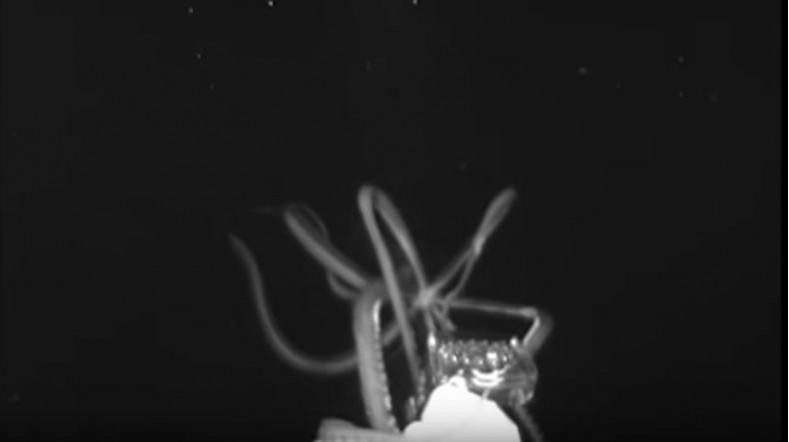
A giant squid - 12 feet long - was captured 100 miles off the coast of New Orleans when American researchers were exploring deep waters near the Gulf of Mexico waters.
Through the specially designed 'Medusa' camera that is made to appear like a bioluminescent jellyfish, the National Oceanic and Atmospheric Administration (NOAA)'s Office of Ocean Exploration and Research (OER) captured the footage last week in an expedition.
The video, caught by the US federal ocean exploration organisation from its 'Journey into Midnight' expedition, shows a giant squid hunting for the e-jelly before wrapping its large set of arms and tentacles while attacking the device. The creature then quickly retrieves after sensing that the device is not food.
The team wrote in its blog post, that although it is uncertain to tell how big the sea creature was, it was identified as a juvenile giant squid measuring 3 to 3.7 meters (10 to 12 feet) long.
Michael Vecchione, a senior scientist of National Systematics Laboratory at the Smithsonian Institution National Museum of Natural History in Washington, D.C, specialising in cephalopods in the deepwater variety also confirmed the expedition's finding and identified the creature as a giant squid.
Lightning striking discovery
The team also reported that 30 minutes after the footage was discovered by the scientists, "lightning struck the ship."
The lightning struck a cantenna a few feet away from the bridge and remotely operated vehicle (ROV) van where people were gathered.
While no person was harmed, the fear of losing the footage as well as the possible dangers of the ship from sinking threatened the researchers.
"Luckily the computer was safe. We then ran outside and saw a long vertical column of brown and yellow smoke behind the ship. This and fragments scattered across the deck were what remained of the antenna and the instruments that were on it. If that was not enough, the captain then came down to tell us that a waterspout was forming off the port bow", wrote Sönke Johnsen and
Edie Widder in their mission logs.









!['Had denied Housefull franchise as they wanted me to wear a bikini': Tia Bajpai on turning down bold scripts [Exclusive]](https://data1.ibtimes.co.in/en/full/806605/had-denied-housefull-franchise-they-wanted-me-wear-bikini-tia-bajpai-turning-down-bold.png?w=220&h=138)



